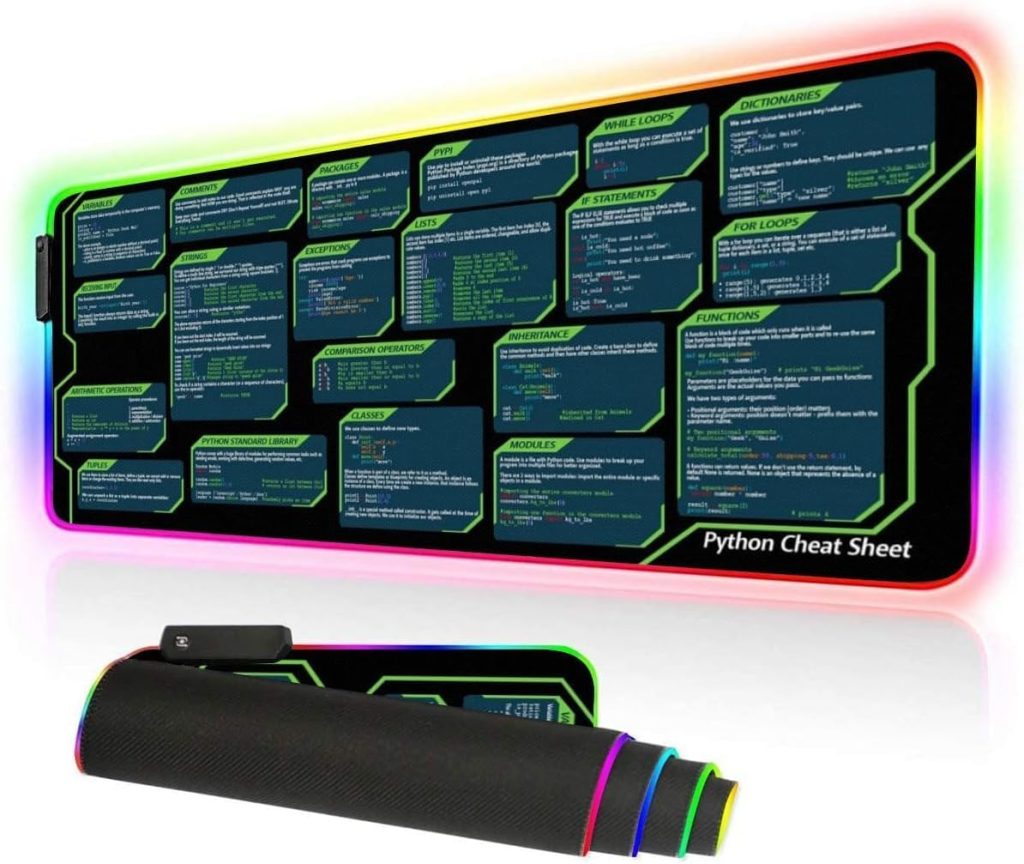
TensorFlow is a powerful tool for building and training machine learning models, but as with any complex system, bugs and issues can arise during the development process. Debugging TensorFlow models can be challenging due to the complexity of the computation graphs and the asynchronous execution of operations. However, TensorFlow provides a set of debugging utilities in the tf.debugging module that can help developers identify and fix issues in their models.
One of the primary challenges in debugging TensorFlow models is understanding the flow of tensors through the computation graph. Tensors are the fundamental data structures in TensorFlow, and they flow through the graph as operations are executed. When an error occurs, it can be difficult to trace the source of the problem without a clear understanding of how the tensors are being manipulated.
To address this challenge, TensorFlow offers several debugging tools that allow developers to inspect the values of tensors at various points in the computation graph. These tools include asserts, print statements, and other utilities that can be inserted into the graph to provide real-time feedback on the state of the model. By using these tools, developers can more easily identify the root cause of issues and make the necessary fixes to their models.
Debugging TensorFlow models requires a systematic approach and a good understanding of the tools available in the tf.debugging module. In the following sections, we will explore some of these tools in more detail and provide examples of how they can be used to debug common issues in TensorFlow models.
Using tf.debugging.asserts
tf.debugging.asserts are a set of operations that check the condition of a tensor and throw an error if the condition is not met. These assertions are similar to the assert statement in Python, but they’re specifically designed for use in TensorFlow computation graphs. By incorporating tf.debugging.asserts into your model, you can ensure that tensors meet certain criteria before proceeding with further computations.
For example, if you want to ensure that a tensor contains only non-negative values, you can use tf.debugging.assert_non_negative(). Here is how you would insert this assertion into your model:
# Assume `tensor` is an existing TensorFlow tensor tf.debugging.assert_non_negative(tensor, message="Tensor contains negative values")
If the tensor contains any negative values, the assertion will throw an error with the message provided. This can help you quickly identify when and where invalid data is entering your model.
Other useful assertions provided by tf.debugging include:
tf.debugging.assert_equal(x, y)– checks if two tensors are equal.tf.debugging.assert_positive(tensor)– ensures all elements in the tensor are greater than zero.tf.debugging.assert_type(tensor, expected_type)– verifies that the tensor is of the expected data type.
Let’s see an example where we check if two tensors are equal:
# Assume `tensor_a` and `tensor_b` are existing TensorFlow tensors tf.debugging.assert_equal(tensor_a, tensor_b, message="Tensors are not equal")
If tensor_a and tensor_b are not equal, the assertion will throw an error, alerting you to a potential issue in your model’s logic.
It is important to note that these assertions will only be checked during the runtime of the TensorFlow session, and they do not affect the performance of the model during inference, as they’re typically disabled in a production environment.
By strategically placing tf.debugging.asserts throughout your TensorFlow model, you can build in checkpoints that validate the integrity of the tensors flowing through the computation graph. This proactive approach to debugging can save you time and frustration by catching errors early in the development process.
Inspecting Tensors with tf.print
Inspecting Tensors with tf.print
Another useful tool for debugging TensorFlow models is the tf.print function. This function allows you to print the value of tensors at any point in the computation graph, which can be invaluable for understanding the flow of data and identifying issues. Unlike traditional print statements in Python, tf.print is designed to work within the TensorFlow execution model.
To use tf.print, you simply pass the tensor or tensors you want to inspect, along with optional formatting and output information. Here’s a basic example:
# Assume `tensor` is an existing TensorFlow tensor tf.print(tensor, output_stream=sys.stderr)
This will print the value of tensor to the standard error output stream whenever the tensor is evaluated. You can also print multiple tensors at once:
# Assume `tensor1` and `tensor2` are existing TensorFlow tensors tf.print(tensor1, tensor2, output_stream=sys.stdout)
The output_stream parameter allows you to specify where the output should go. By default, it uses sys.stdout, but you can also direct it to a file or other output streams.
Here’s an example that includes formatting options:
# Assume `tensor` is an existing TensorFlow tensor
tf.print("Tensor value:", tensor, summarize=10)
The summarize option limits the number of elements printed from each tensor to prevent flooding the output with too much data. That’s particularly useful when dealing with large tensors.
Using tf.print can be a simple yet effective way to gain insights into your model’s behavior. It is especially useful during the development phase when you’re trying to understand how data is transformed at each step. However, it’s important to use tf.print judiciously. Excessive use can clutter your output and make debugging more difficult. Additionally, just like with asserts, tf.print statements are typically removed or disabled in a production environment to avoid performance overhead.
By combining the use of tf.debugging.asserts to enforce tensor conditions and tf.print to inspect tensor values, you can create a powerful debugging environment that will help you quickly identify and resolve issues in your TensorFlow models.
Debugging Model Training with tf.debugging
When it comes to debugging model training with tf.debugging, it very important to ensure that the training loop is functioning correctly and that the model is learning as expected. One common issue during model training is the presence of NaN (Not a Number) or Inf (Infinity) values in the tensors, which can halt the training process or lead to invalid results. To prevent this, TensorFlow provides tf.debugging.assert_all_finite(), which checks that all elements of a tensor are finite numbers (neither NaN nor Inf).
# Assume `loss` is the computed loss tensor during training tf.debugging.assert_all_finite(loss, message="Loss contains NaN or Inf values")
If the loss tensor contains any non-finite values, an error will be raised, enabling you to stop the training and investigate the cause.
Another common issue is the explosion or vanishing of gradients, which can occur when the backpropagation algorithm updates the model parameters. To monitor the gradients, you can use tf.debugging.check_numerics(), which serves a similar purpose as tf.debugging.assert_all_finite() but with a more informative error message when non-finite values are found.
# Assume `gradient` is a computed gradient from the optimizer tf.debugging.check_numerics(gradient, message="Gradient has NaN or Inf values")
This check can be placed right after the gradient computation step in the training loop, giving you immediate feedback if something goes wrong during the parameter update process.
It is also essential to ensure that the model parameters stay within a reasonable range throughout the training. For this purpose, tf.debugging.assert_near() can be used to check if the parameters or their updates are close to a particular value or tensor within a specified tolerance.
# Assume `param_updates` are the updates for the model parameters
# and `expected_updates` is a tensor of expected values for comparison
tolerance = 1e-6
tf.debugging.assert_near(param_updates, expected_updates,
message="Parameter updates are not as expected",
atol=tolerance)
By placing these debugging operations strategically within your training loop, you can gain a deeper understanding of how your model is behaving at each training step. This allows you to catch errors early and fix them before they propagate and cause more significant issues.
Remember that while these debugging tools can be incredibly helpful during development, they can incur a performance cost. Therefore, it’s advisable to use them judiciously and consider removing or disabling them when deploying your model in a production environment.
Ultimately, the goal of using tf.debugging is to create a robust model training process where potential issues can be identified and addressed promptly, leading to more reliable and accurate machine learning models.
Best Practices for Debugging TensorFlow Models
Apart from the use of specific debugging functions, there are several best practices that can make the debugging process more effective:
- Before adding complexity, make sure that a simple version of your model works as expected. This way, you can incrementally add complexity and catch issues early on.
- Test individual components of your model separately. This includes layers, activation functions, and loss calculations. By isolating components, you can more easily pinpoint where issues arise.
- TensorFlow’s eager execution mode allows operations to be evaluated immediately, without building graphs. This can simplify debugging since you can inspect the values of tensors right after they’re computed.
- By using the tf.data API, you can create robust and efficient input pipelines, making it easier to debug data-related issues.
- Use callbacks like
tf.keras.callbacks.TensorBoardto monitor training progress and spot anomalies in learning curves, weights, and gradients.
Here’s an example of using eager execution for debugging purposes:
# Enable eager execution tf.config.run_functions_eagerly(True) # Define a simple model model = tf.keras.Sequential([ tf.keras.layers.Dense(10, activation='relu'), tf.keras.layers.Dense(1) ]) # Try running a forward pass to check for immediate errors result = model(tf.constant([[0.1, 0.2, 0.3]])) print(result)
When you encounter an error, it is also helpful to reduce the problem to the smallest reproducible case. This approach, often called creating a Minimal, Complete, and Verifiable Example (MCVE), can help you identify the exact cause of the issue without the noise of unrelated code.
Finally, keep your TensorFlow environment up-to-date. Bugs and issues are regularly fixed in new releases, so updating to the latest version could resolve some problems without additional effort.
By following these best practices and strategically using the tf.debugging tools, you can efficiently debug your TensorFlow models and move forward with developing accurate and high-performing machine learning solutions.






